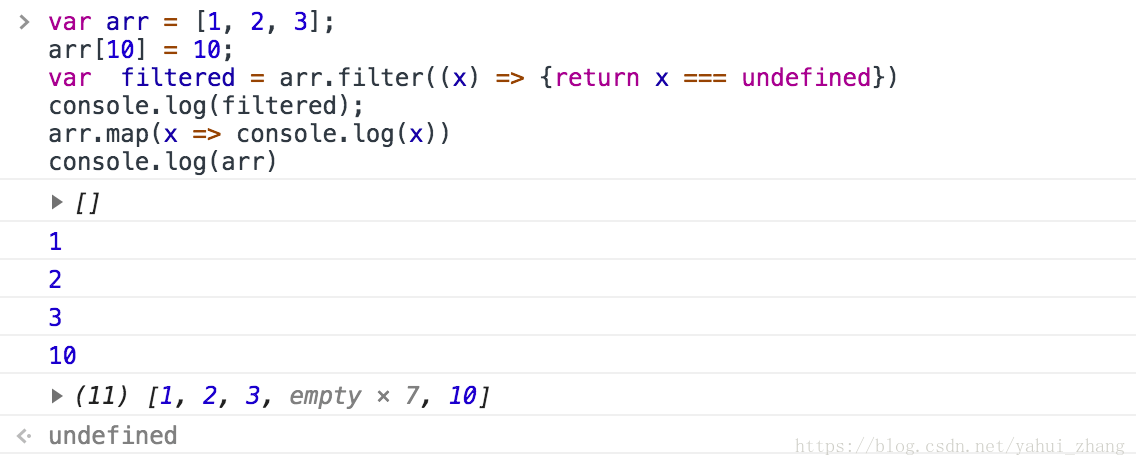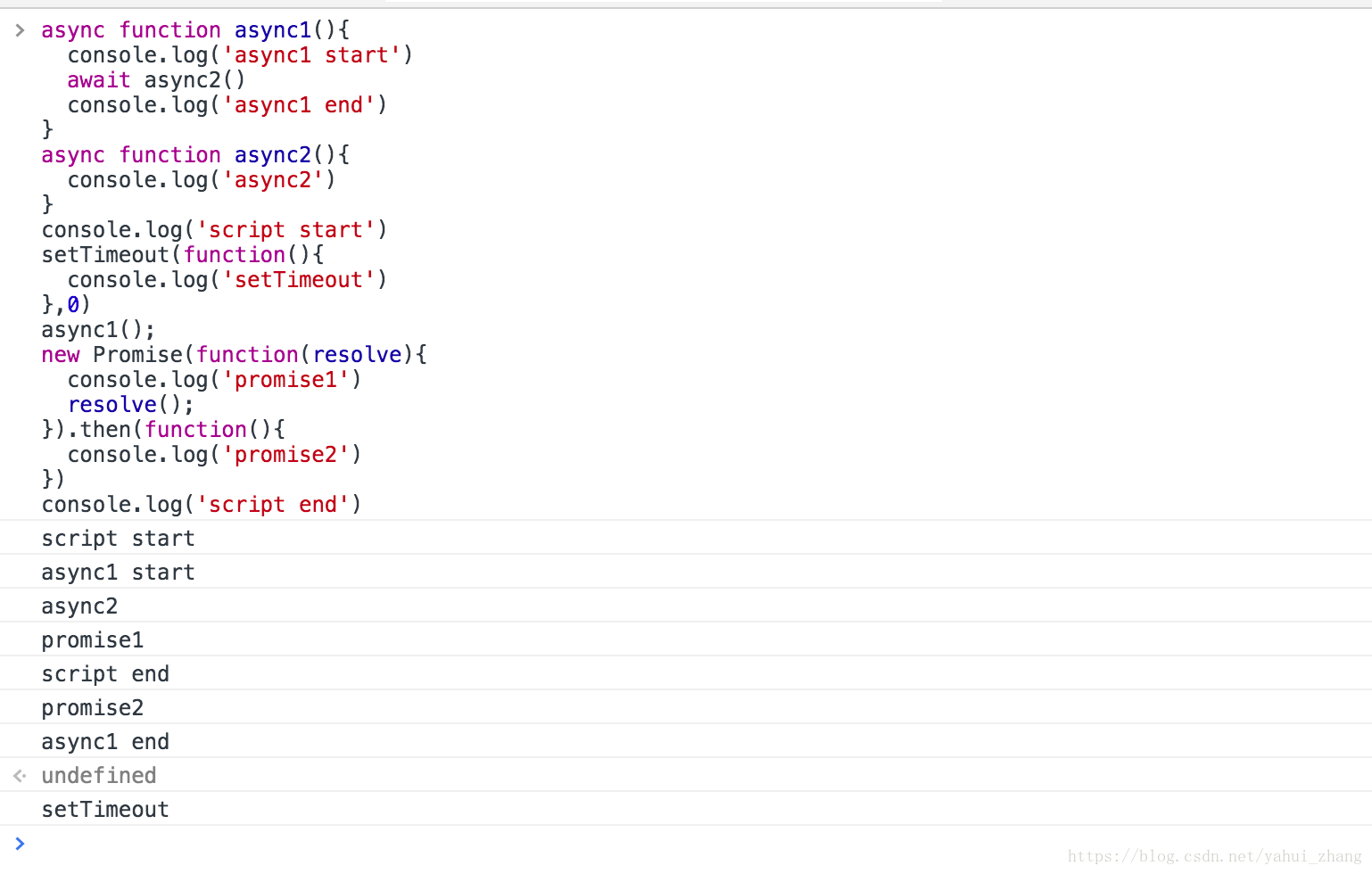技术人除了焦虑,你还要每日一题。每日会持续更新...
一、题目:
var arr = [1, 2, 3];
arr[10] = 10;
var filtered = arr.filter((x) => x === undefined)
console.log(filtered);
arr.map(x => console.log(x))
console.log(arr)
答案(Chrome输出)

知识点:js对于数组中被跳过的位置放的是empty items, 不是undefined, empty items遍历的时候会被跳过;
二、题目
async function async1(){
console.log('async1 start')
await async2()
console.log('async1 end')
}
async function async2(){
console.log('async2')
}
console.log('script start')
setTimeout(function(){
console.log('setTimeout')
},0)
async1();
new Promise(function(resolve){
console.log('promise1')
resolve();
}).then(function(){
console.log('promise2')
})
console.log('script end')
答案(Chrome输出)

知识点:
-
js是单线程的。
-
promise被定义后是立即执行的,但它返回的resolve是异步的。
-
promise的异步优先级高于setTimeout(这个如果不懂可以看下js的Event loop和task queue)
-
async会返回一个promise对象,await关键字会让出线程。
下面分析下代码执行流程:
1、执行console.log('script start'),输出script start;
2、执行setTimeout,是一个异步动作,放入异步队列中;
3、执行async1(),输出async1 start,继续向下执行;
4、执行async2(),输出async2,并返回了一个promise对象,await让出了线程,把返回的promise加入了异步队列,所以async1()下面的代码也要等待上面完成后继续执行;
5、执行new Promise,输出promise1,然后将resolve放入异步队列;
6、执行console.log('script end'),输出script end;
7、到此同步的代码就都执行完成了,然后去异步队列里去获取任务,现在队列中有一个promise(async2返回的),resolve(new Promise的),和setTimeout,先取出promise执行,默认返回resolve,再次加入了异步队列,现在就队列就变成了resolve(new Promise的),resolve(async2返回的promise返回的),setTimeout。
8、然后执行resolve(new Promise的),输出了promise2。
9、接下来执行resolve(async2返回的promise返回的),输出了async1 end。
10、最后执行setTimeout,输出了settimeout。
以上是我个人理解,如有错误欢迎指正;




















 616
616

 被折叠的 条评论
为什么被折叠?
被折叠的 条评论
为什么被折叠?








